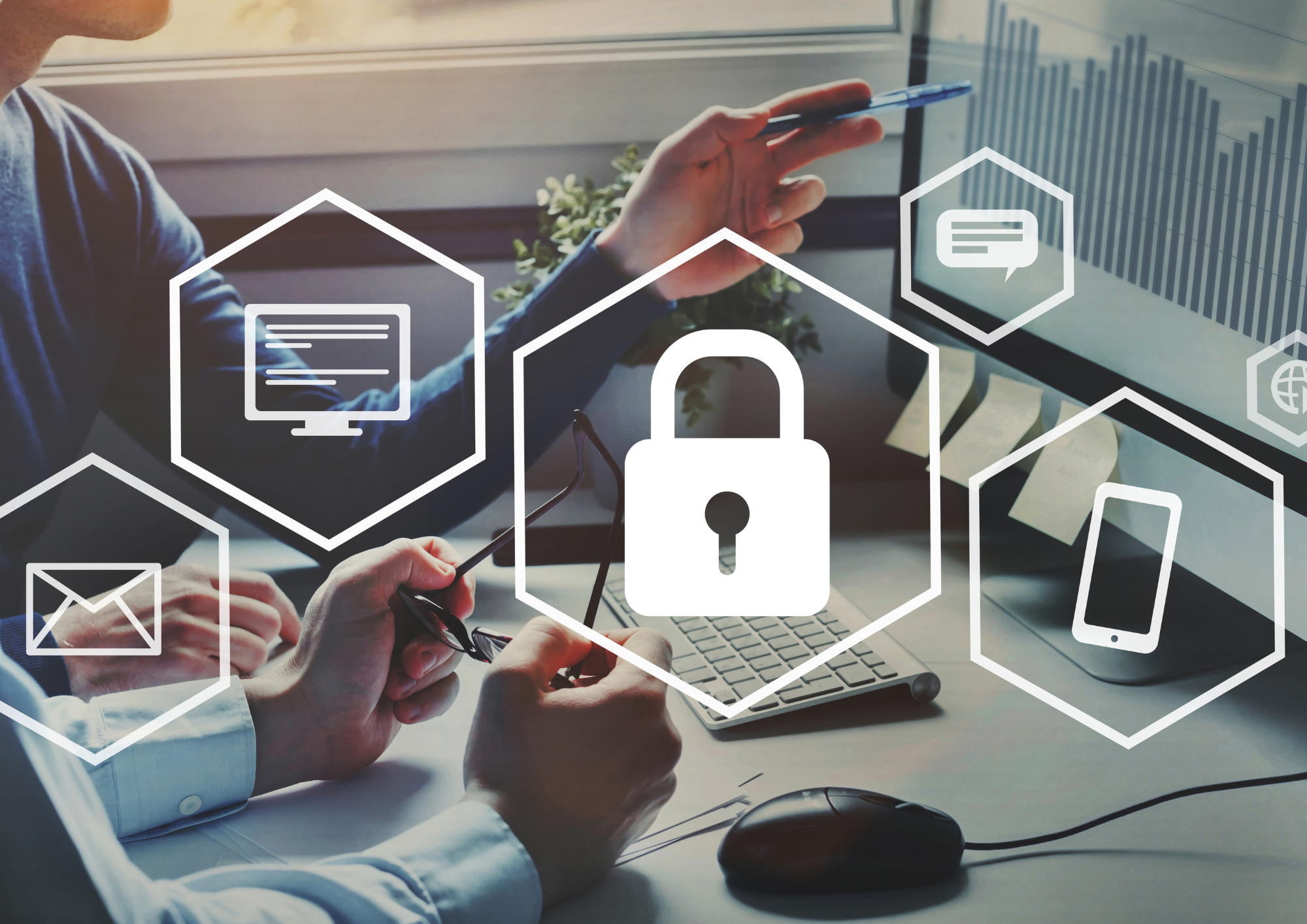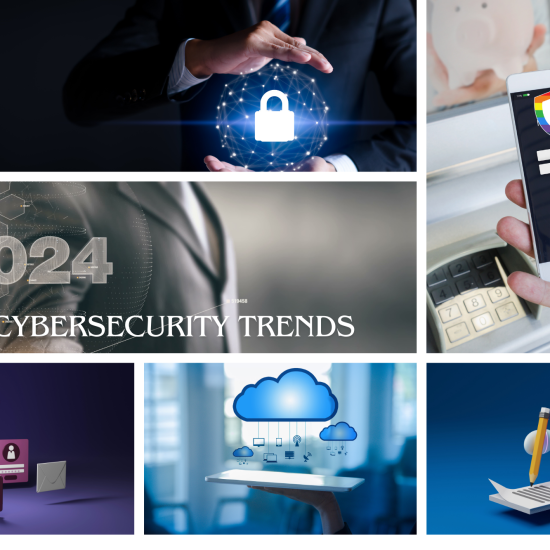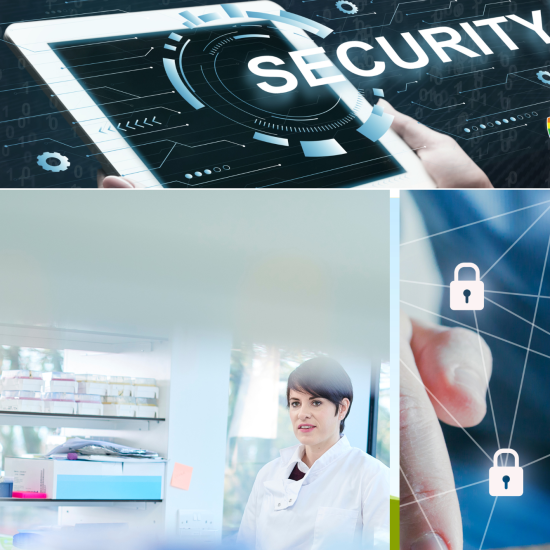Top 10 Best Practices for Cybersecurity
Recent cyberattacks on Uber, SolarWinds, Colonial Pipeline, and data breaches of Twitter, Dropbox, Amazon RDS worldwide have forced Security experts and businesses to be on their toes to find ways to prevent them. While most cybersecurity initiatives are focussed on threat detection and response, prevention is the most efficient way of handling risk posed by the emerging threat landscape.
By following certain best practices a business can protect itself against evolving cyber threats. Let’s dive into ten cybersecurity best practices and learn to keep our businesses secure.
- Use Firewalls and Anti-viruses
Hackers can attack your systems and networks through various methods, such as malware, viruses, phishing attacks, trojans, spyware, etc., to gain access to your data. Users often face the risk of hacking, identity theft, and online fraud when they expose their devices to other networks. Rogue cybercriminals can subject networks and devices to repeated threats. Easily accessible internet connections increase the risk of such network attacks.
A firewall can help protect your computer and data by managing your network traffic. It does this by blocking unsolicited and unwanted incoming network traffic. Firewalls also provide enhanced security levels for vulnerable networks: Unauthorized users won’t be able to access private networks when you have firewalls in place. Firewalls will also secure networks against phishing attacks. Business-grade firewalls will block outflowing data when it notices a social engineering attack. Firewalls can also identify the signatures of dangerous users or applications and then send alerts in case of an intrusion. It provides information to the cybersecurity team that can act proactively to nullify threats before they cause any damage to your client’s networks and devices.
2. Implement a zero-trust security framework
Traditionally, companies have often implemented a perimeter-focused security strategy where everyone inside the perimeter is trusted and all threats are believed to originate from outside. This perimeter-based security strategy is ineffective at protecting against modern cyber threats due to the risks of failed defenses, insider threats, account takeover attacks, and other factors. Zero Trust is a security framework requiring all users, whether in or outside the organization’s network, to be authenticated, authorized, and continuously validated for security configuration and posture before being granted or keeping access to applications and data. Execution of this framework combines advanced technologies such as risk-based multi-factor authentication, identity protection, next-generation endpoint security, and robust cloud workload technology to verify a user or systems identity, consideration of access at that moment in time, and the maintenance of system security.
Zero Trust seeks to address the following key principles based on the NIST guidelines:
- Continuous verification. Always verify access, all the time, for all resources.
- Limit the “blast radius.” Minimize impact if an external or insider breach does occur.
- Automate context collection and response. Incorporate behavioral data and get context from the entire IT stack (identity, endpoint, workload, etc..) for the most accurate response.
3. Improve the security of network infrastructure devices
Network infrastructure devices are ideal targets for malicious cyber actors because most or all organizational and customer traffic must pass through them. Cyber threat actors presence on an organization’s gateway router can monitor, modify, and deny traffic to and from the organization. Organizations and individuals that use legacy, unencrypted protocols to manage hosts and services make successful credential harvesting easy for malicious cyber actors.
The Cybersecurity and Infrastructure Security Agency (CISA) encourages users and network administrators to implement the following recommendations to better secure their network infrastructure:
- Segment and segregate networks and functions.
- Limit unnecessary lateral communications.
- Harden network devices.
- Secure access to infrastructure devices.
- Perform out-of-band (OoB) network management.
- Validate the integrity of hardware and software.
4. Mobile Security
The COVID-19 pandemic has forced organizations to adopt a hybrid workforce model where remote workers commonly work from mobile devices. Companies are increasingly adopting bring-your-own-device (BYOD) policies that allow employees to work from their preferred devices.
Cybercriminals have now gained access to a vast cyber threat landscape with ingrained vulnerabilities where they are targeting these systems and launching attacks. With a growing number of mobile devices accessing corporate systems and sensitive information, securing these devices has become a vital component of an enterprise security strategy.
How can you protect yourself?
- Maintain physical security. Do not leave your device unattended in public or easily accessible areas.
- Keep software up to date. If the vendor releases updates for the software operating your device, install them as soon as possible. Installing them will prevent attackers from being able to take advantage of known problems or vulnerabilities.
- Use strong passwords. Choose devices that allow you to protect your information with passwords. Choose Rainbow Secure Unique Multi-layer Password Authentication.
- Disable remote connectivity. Some mobile devices are equipped with wireless technologies, such as Bluetooth, you should disable these features when they are not in use.
- Encrypt files. If you are storing personal or corporate information, see if your device offers the option to encrypt the files. By encrypting files, you ensure that unauthorized people can’t view data even if they can physically access it.
- Be cautious of public Wi-Fi networks. Ensure the wi-fi connection is secure.
5. Streamline DevSecOps processes
DevSecOps is the practice of integrating security into development processes. By building security tools into automated continuous integration and continuous deployment (CI/CD) pipelines, an organization can simplify vulnerability detection and management, and improve the overall security of its products.
A consolidated security architecture streamlines DevSecOps by improving communication across an organization’s various units. DevSecOps tools can gain access to threat intelligence and information about newly identified vulnerabilities, simplifying the process of addressing these threats within the development process.
6. Incorporate cyber awareness as a daily routine
Employees are both the first and last line of defense against a possible attack, making cyber security awareness training critical to your company’s security strategy. Egress Research found that, between 2020 and 2021, 94 percent of organizations had an insider data breach, of which almost 75 percent resulted from employees breaking security rules. In the same report, 84 percent of IT leaders who were surveyed indicated the primary cause of serious incidents was human error.
A cyber security awareness program should be employee-centric. The information should be short, accessible, and digestible content that they can consume immediately. Continuously train and test your employees by using simulated attacks. Identify and reduce high-risk employees weaknesses and work towards rectifying them. Be open to feedback and incorporate changes for the overall success of the awareness program and real-time use.
7. Monitor Third-party controls
Controlling third-party access is a crucial part of a security strategy. A third-party person can have open access to your data and of course, it entails a higher risk of insider attacks. It is essential to monitor third-party actions to protect your data from breaches. It is important to restrict third-party access to a certain area and note to deactivate the access whenever they finish the work.
8. Backup Data Regularly
Backing up the data has become crucial to retrieve it in an event of failure or attack. Cyberthieves often aim at your data, so it is essential to back up your data files and stored them in a safe location as per the company’s security policies. It is important to safeguard data thoroughly protected, encrypted, and frequently updated
9. Keep your security software updated
Ensure your security software, web server, and operating system are updated with the latest versions. Anti-virus and Anti-malware protections are revised to achieve the target of fighting against security breaches. It is essential to install updated security software on all your devices and the network so that it helps to protect you from the latest cyber threats.
10. Plan a robust cyber security policy
The cyber threat landscape is evolving rapidly and getting sophisticated. As cyber threat actors develop more sophisticated techniques and take advantage of the current supply chain vulnerabilities, hybrid workforce high-impact attacks will only grow more common. A cybersecurity policy should be a well-written document that contains behavioral and technical guidelines for all employees in order to ensure maximum protection from cybersecurity incidents and ransomware attacks.
The policy should Identify and Prioritize Assets, Risks, and Threats and set realistic goals. High-quality cyber incident planning and response training can be the first step. The policy should be aligned with the recognized standards, including federal governmental requirements.
Some regulations to consider can be HIPAA compliant, Export Administration Regulations (EAR), PCI Security Standards, etc.
Finally, test your policy to ensure that it’s doing its job. Don’t ever wait for cybercrime to happen to evaluate the effectiveness of your cybersecurity policy.
You must conduct regular cybersecurity assessments such as Ransomware Readiness Assessments, NIST Cyber Health Checks as well as incident response and ransomware tabletop exercises to stay on top of cyber threats. Regular assessments are the only way to gauge if all the security measures you have taken are adequate and effective in real-world scenarios.
Rainbow Secure offers Multi-layer graphical Login Authentication Service for your email to protect your business from account takeover over attacks. Rainbow Secure also offers Single Sign On with multi-layer graphical security and advanced security protection is ideal in today’s world of hybrid work and increased data sharing. Consult Rainbow Secure Team to save your business from these data breach costs and use that money to grow your business.







